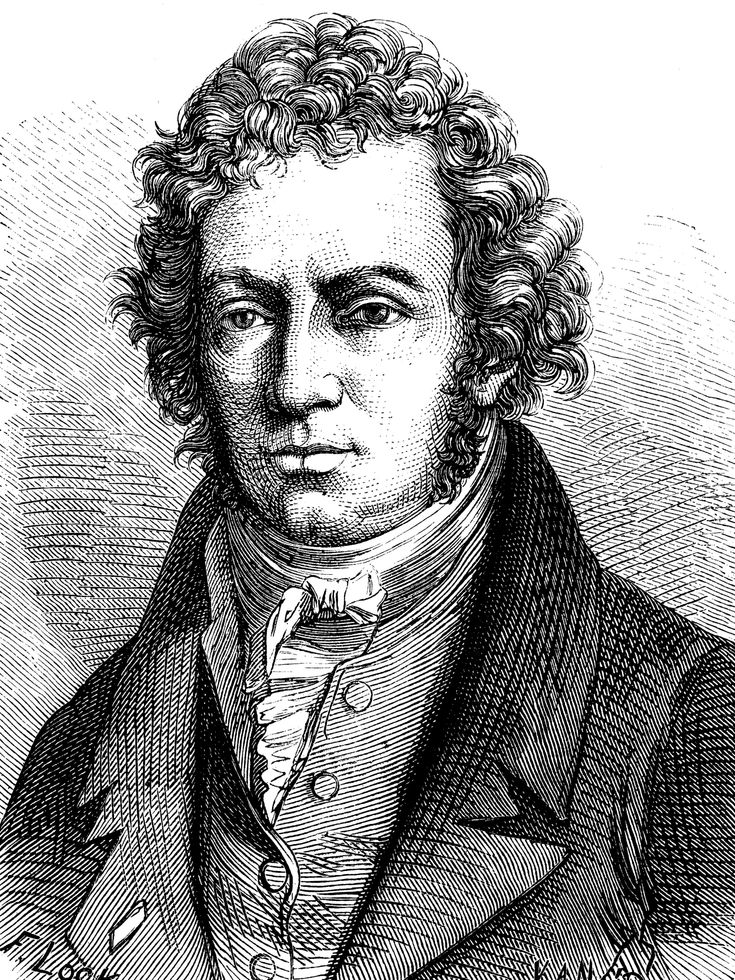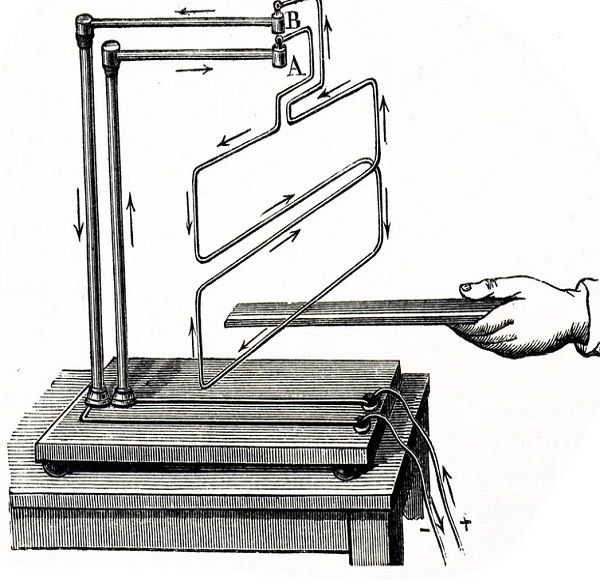Without an understanding of the fundamental relationship between electricity and magnetism, it would not have been possible to invent motors, telecommunications equipment, kitchen appliances and more.
A key part of our understanding of that relationship, known as classical electromagnetics or classical electrodynamics, was first theorized in the 1820s by André-Marie Ampère, a French physicist and mathematician. Through a series of experiments, Ampère discovered that a magnetic field is generated when charge flows through two parallel wires, pushing them apart or pulling them together. He also identified the important distinction between current and voltage. The unit of electric current known as the ampere, or amp for short, is named after the founder of electrodynamics.
Ampère, a professor of mathematics at the Collège de France, in Paris, developed a formula to measure the magnetic force between two electric currents. It was fundamental to 19th-century developments in electricity and magnetism by scientists including Michael Faraday, James Clerk Maxwell, J.J. Thomson, and Wilhelm Eduard Weber.
A ceremony was held on 3 April at the Collège de France to recognize the discovery of electrodynamics with an IEEE Milestone. The IEEE France Section sponsored the nomination.
Building the foundation of electric devices
 André-Marie Ampère
André-Marie Ampère
Because Ampère’s father believed that young boys shouldn’t attend a formal school, Ampère’s education came from the books in his family’s library. When he was 12 years old, he taught himself advanced mathematics. By the time he was 18, he had mastered the entire known field, according to the Ampère Museum, in Poleymieux-au-Mont-d’Or, France.
He began his career in 1799 as a math and science teacher in Lyon, France. He moved to Paris in 1804 to become a tutor at the École Polytechnique, which then was about 10 years old. Throughout the next two decades, in addition to tutoring at the polytechnic he also taught courses in astronomy, philosophy, and mathematics at the University of Paris. He left the university in 1824 to become chair of experimental physics at the Collège de France, also in Paris, where he first experimented with the nature of electric and magnetic forces.
In the early 1820s mathematician François Arago, his friend, told Ampère about experiments in electromagnetism that were being conducted by Danish physicist Hans Christian Ørsted. When studying the interaction between a galvanic current and a magnetized needle, Ørsted discovered that the needle was deflected by an adjacent electric current.
Inspired by those findings, Ampère further explored the relationship between electricity and magnetism. He built a device that had a 20-meter-long wire carrying an electric current. In his first experiment, he moved a compass closer to the wire and discovered that the needle mapped out a series of concentric circular loops in the plane perpendicular to the wire.
For his next set of experiments, he replaced the 20-meter wire with a shorter one. He investigated the force exerted on the new wire and demonstrated that two parallel wires carrying electric currents attract or repel each other, depending on whether the currents flow in the same or opposite direction.
That discovery laid the foundation of what was then called electrodynamics, according to a lecture about Ampère’s experiments given at the University of Texas at Austin.
Using the results from his experiment, he wrote a formula that calculated the approximate magnetic force per unit length between two parallel conductors.
The principle, later named Ampère’s Law by Maxwell, states that the mutual action of two lengths of current-carrying wire is proportional to their lengths and to the intensities of their currents. Ampère’s Law is used to determine the magnetic field generated by an electric current—which is needed in building electromagnets, motors, generators, and transformers.
In 1827 Ampère published his findings in Memoir on the Mathematical Theory of Electrodynamic Phenomena, Uniquely Deduced From Experience. It was the first time he wrote using the term electrodynamics.
Attendees of the International Electrical Congress in 1881, 45 years after his death, named the unit of electric current in his honor.
Administered by the IEEE History Center and supported by donors, the Milestone program recognizes outstanding technical developments around the world.
Two Milestone plaques recognize Ampère’s work. One is displayed outside the physics building at the Collège de France; the other is in the Ampère Museum. They read:
“Stimulated by experimental reports that an electric current could deflect a compass needle, André-Marie Ampère discovered the fundamental law of electrodynamics, the science of interactions between electric currents. He then developed the theory that electric currents are responsible for magnetism. These achievements formed the basis for electrical technologies including electric motors and generators. In 1881 the International Electrical Congress named the unit of electric current the ampere (A).”
Source: Spectrum










